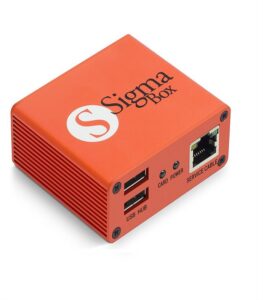Understanding Active Windows: Why They Occur and Here Are Solutions
 Active windows are a fundamental aspect of modern computing, but they can sometimes cause confusion or annoyance when they behave unexpectedly. In this article, we will delve into what active windows are, why they might come to the forefront unexpectedly, and practical solutions to manage them effectively.
Active windows are a fundamental aspect of modern computing, but they can sometimes cause confusion or annoyance when they behave unexpectedly. In this article, we will delve into what active windows are, why they might come to the forefront unexpectedly, and practical solutions to manage them effectively.
What Are Active Windows?
An active window is the window currently in use on your computer. It is the one receiving input from your keyboard and mouse. Typically, the active window is highlighted or appears on top of other windows. This functionality is crucial for multitasking, allowing users to switch between different applications seamlessly.Why Active Windows Are Important ?
- Focus Management: Active windows ensure that your input goes to the correct application, preventing mistakes.
- Productivity: They enable smooth workflow by allowing quick transitions between tasks.
- System Navigation: Active windows help in organizing tasks and managing multiple open applications.
Why Do Active Windows Come to the Forefront Unexpectedly?
Unexpected activation of windows can be frustrating and disrupt your workflow. Here are some common reasons why this might happen:1. Software Updates
Many applications are set to automatically update. During these updates, the application might bring itself to the forefront to notify you or complete the process. While this is often helpful, it can be disruptive if it occurs at an inconvenient time.2. Background Processes
Certain background processes or applications might demand attention by becoming active. This is common with antivirus software, system updates, or scheduled tasks that require user intervention or provide notifications.3. User Interaction
Accidental clicks, key presses, or touch-pad gestures can bring a window to the forefront. This is more common on touch-enabled devices or laptops with sensitive touch pads.4. Notification Alerts
Applications like email clients, messaging apps, or calendar reminders often pop up to notify you of new messages or events. These alerts can cause the window to become active.5. Bugs or Glitches
Sometimes, software bugs or glitches can cause windows to become active without any clear reason. This could be due to poorly optimized applications or conflicts between different programs.Solutions to Manage Active Windows
Dealing with unexpected active windows requires a combination of preventive measures and real-time solutions. Here are some effective strategies:1. Adjust Notification Settings
Most applications allow you to customize how and when notifications appear. Adjust these settings to minimize disruptions:- Email Clients: Change notification settings to show alerts in a non-intrusive manner.
- Messaging Apps: Set notifications to silent or disable pop-ups.
- Calendar Apps: Schedule reminders to appear at more convenient times.
2. Disable Auto-Updates
While keeping software up to date is important, you can control when updates occur:- Windows Update: Set updates to occur during non-working hours.
- Application Updates: Disable auto-updates and perform manual updates at your convenience.
3. Use Focus Assist
Windows 10 and later versions offer a feature called Focus Assist, which helps minimize distractions:- Focus Assist Settings: Go to Settings > System > Focus Assist. Configure it to block notifications during specific hours or when using certain applications.
- Priority List: Create a priority list of contacts or applications that are allowed to interrupt you.
4. Adjust Background Process Settings
Control how background processes behave to reduce interruptions:- Task Manager: Use Task Manager to identify and manage background processes. Disable unnecessary startup programs that might cause windows to become active.
- System Settings: Go to Settings > Privacy > Background apps. Disable apps from running in the background if they are not essential.
5. Optimize Touchpad Settings
Prevent accidental window activations on laptops:- Touchpad Sensitivity: Adjust touchpad sensitivity settings to reduce accidental clicks.
- Disable Tap-to-Click: If you often accidentally activate windows by tapping the touchpad, consider disabling this feature.
6. Check for Software Updates and Patches
Regularly update your operating system and applications to reduce bugs and glitches:- Windows Update: Ensure your system is up to date with the latest patches.
- Application Updates: Regularly check for updates for the software you use frequently.
7. Use Third-Party Tools
There are various third-party tools available to help manage active windows:- Window Management Software: Tools like DisplayFusion or AquaSnap provide advanced window management features.
- Notification Management Tools: Applications like FocusMe or Cold Turkey can block notifications and help maintain focus.
8. Create a Distraction-Free Environment
Enhance your workspace to minimize distractions:- Multiple Monitors: Use multiple monitors to segregate works paces and reduce the need to switch windows frequently.
- Virtual Desktops: Utilize virtual desktops to separate different types of tasks.


 Instagram
Instagram YouTube
YouTube Faccebook
Faccebook Twitter
Twitter TikTok
TikTok Rumble
Rumble Reddit
Reddit Telegram
Telegram Quora
Quora Website Traffic
Website Traffic